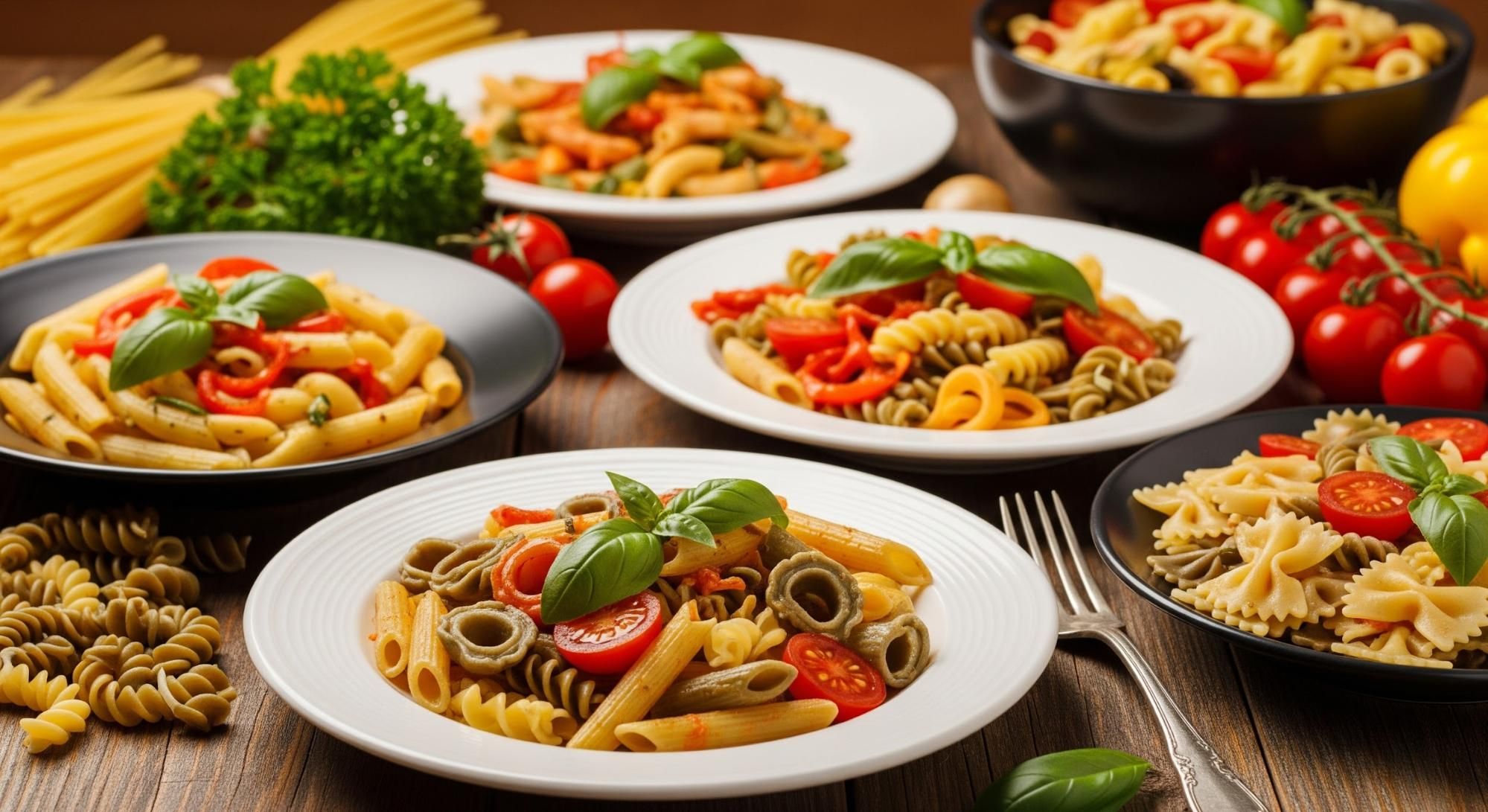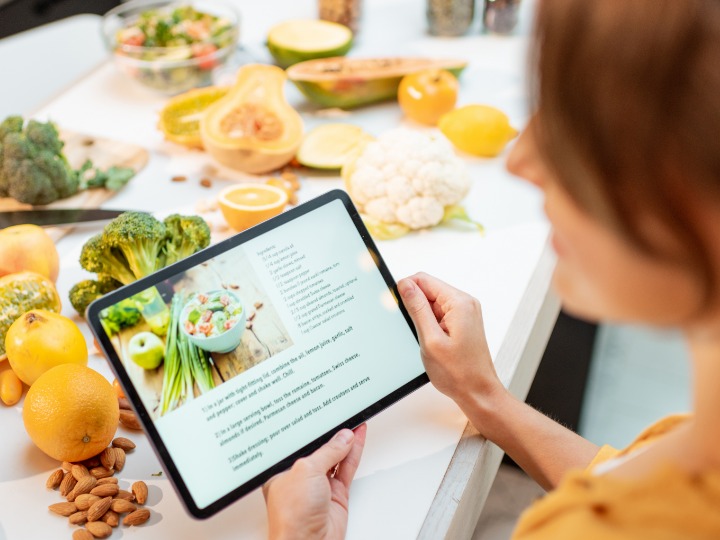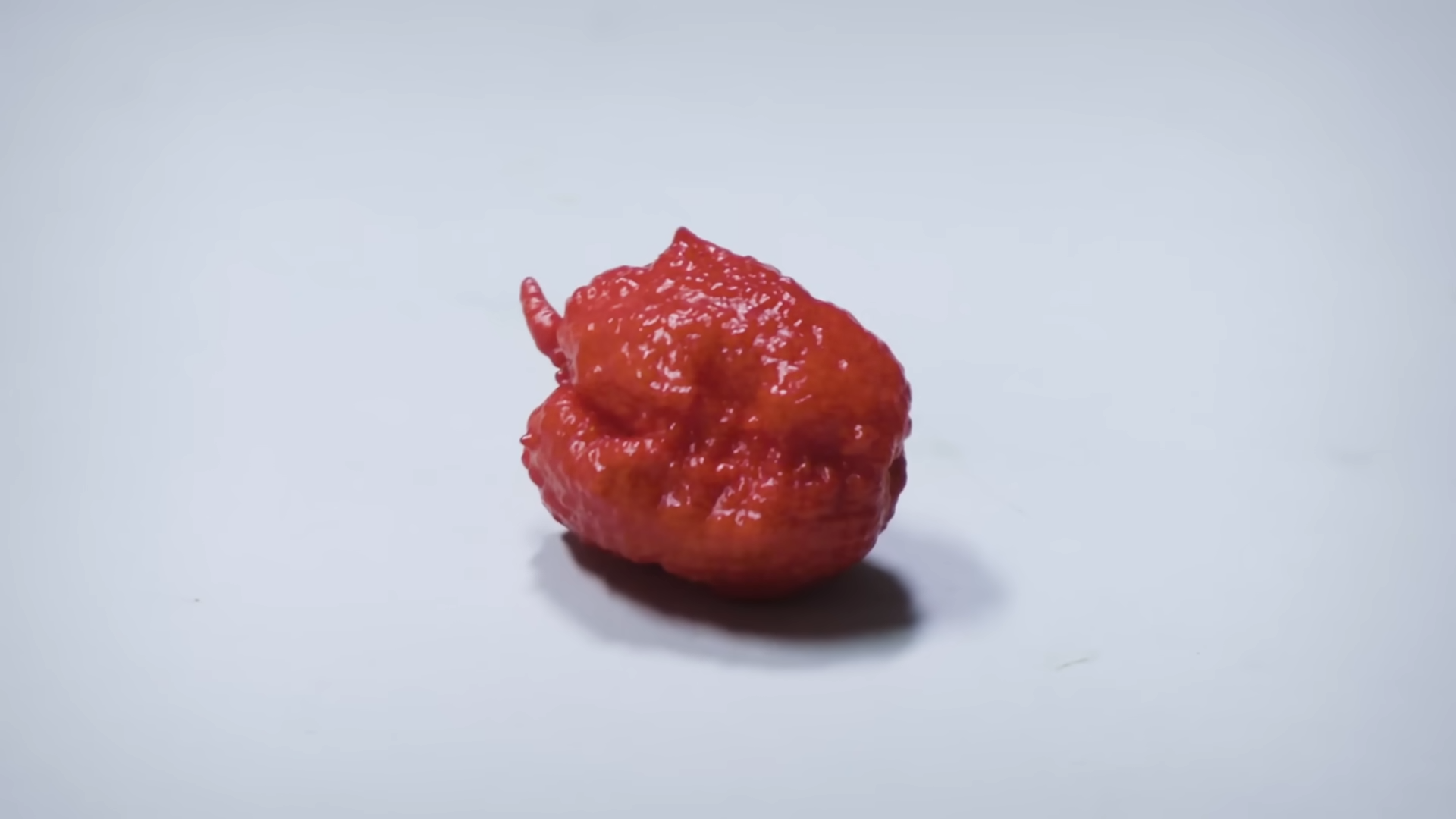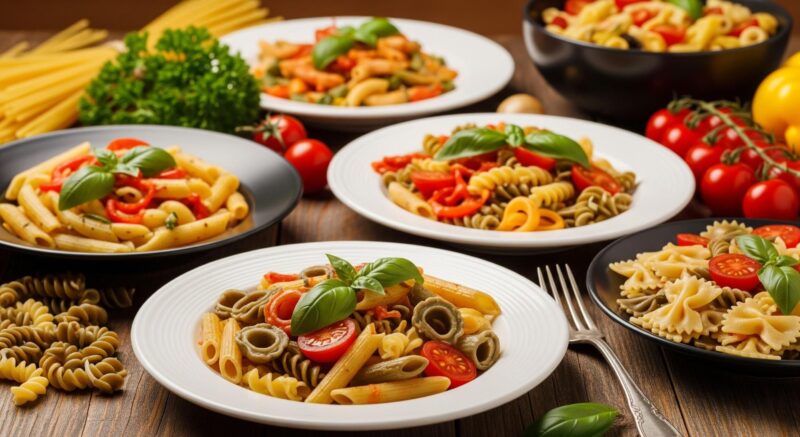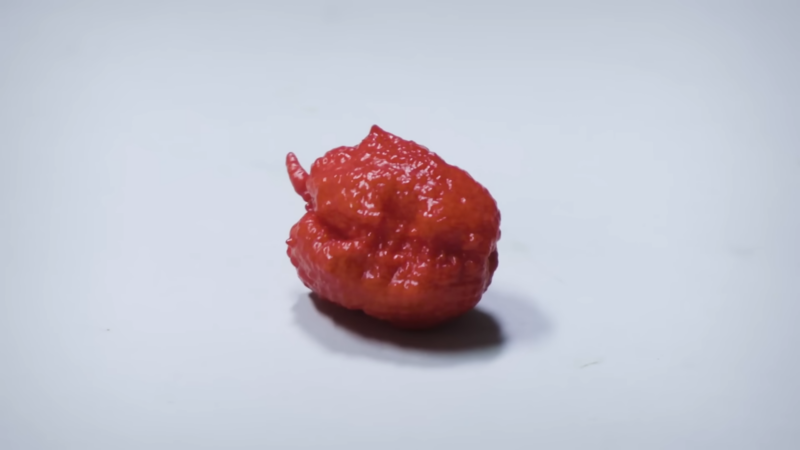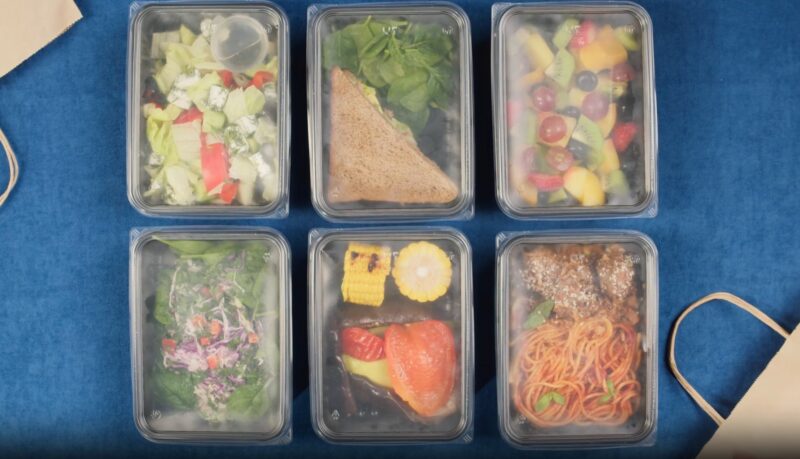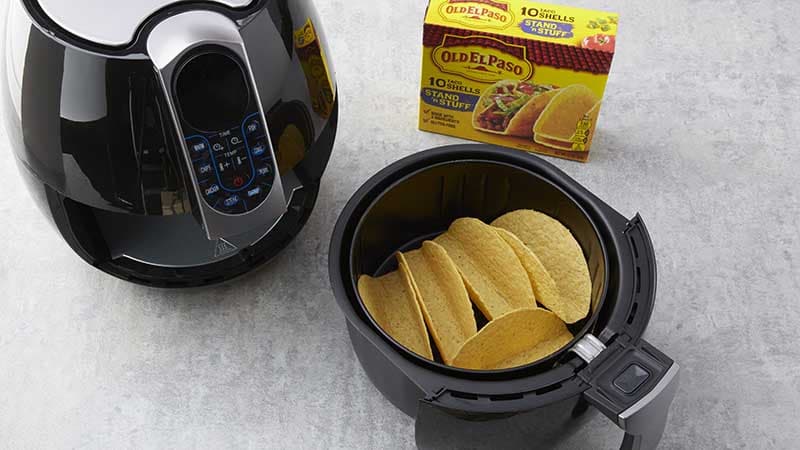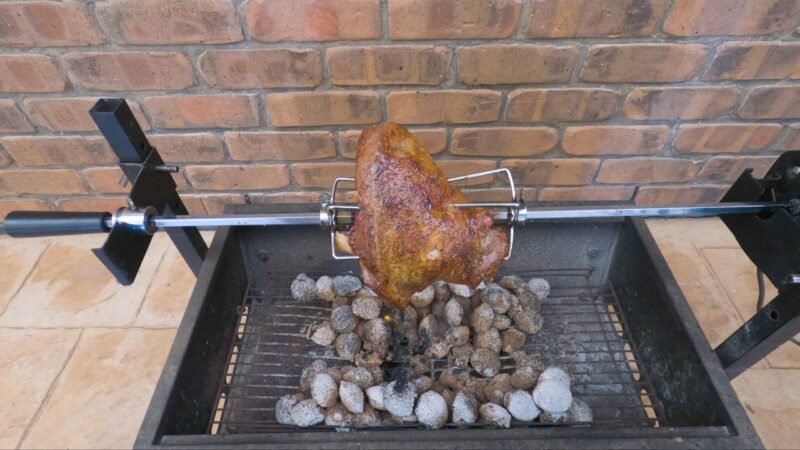
Envision the allure of a whole animal or roast slowly rotating over smoldering charcoal, filling the air with that familiar smell of chargrilled BBQ aroma. This enchanting sight is the world of spit roasting – a timeless experience practiced throughout history in nearly all ancient civilizations.
In this article, we explore the art of spit roasting, as we take a journey through 2 rotisserie ideas that will transform any event into an unforgettable occasion for all.
Table of Contents
Toggle1. How to Spit Roast a Pig
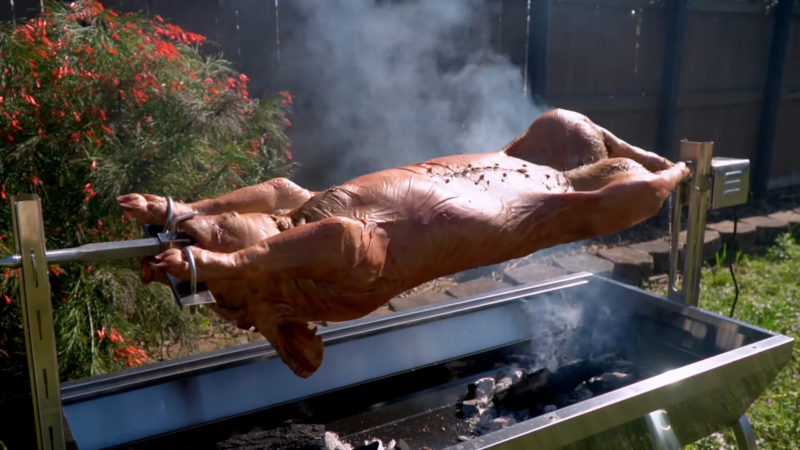
Pig on a spit is a universally recognized roasting method that makes most people think of the stereotypical whole pig with an apple in its mouth being manually turned over an open fire. It is still arguably the most common whole animal cooked on a spit roaster. Let’s break down the essential steps!
You can read their complete guide on spit-roasting a whole pig. Simply Check out here at OutdoorLivingAustralia.
If you prefer to watch it than read it check out Outdoor Living Australia’s YouTube video of the process below. https://youtu.be/pJ8OUgJY_U0?si=dqNH1qcshIV-5ewN
- Dry the whole animal, inside and out, using a paper towel or disposable absorbent cloth. This removes moisture (water) from the skin and helps the skin crackle as it cooks.
- Lightly score the animal on the thickest skin parts. Typically, this is the shoulders and hip area. This step is optional. Do not score the animal too deep as it will split very quickly when cooking.
- Coat the animal in olive oil. This step is optional but can help the salt or rub to stick. Typically, 1-2 cups for a 40-pound (20 kg) pig are plenty. Coat both the outside and inside of the pig.
- Use a pork rub or homemade salt rub and coat the skin thoroughly. The easiest and cheapest way is to use 10 parts salt to 1 part black pepper. A pound of salt (half a kilogram) should be plenty for a 40-pound (20 kg) pig.
These steps are ideally done the night before. If you can’t, you should try to do it 1-2 hours before putting it on the spit.
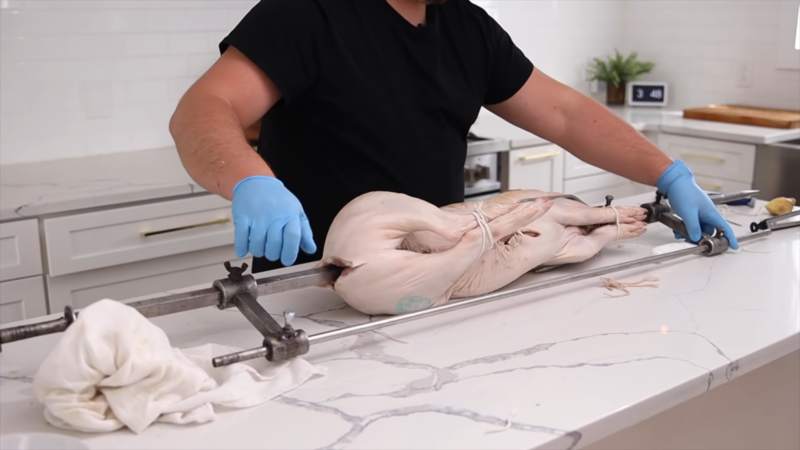
The next steps involve putting on the accessories required to secure it to the skewer. The first step is to place a spine (back) brace halfway along the animal. The belly will be open, and the back brace is placed around the spine and pushed through the outer skin. It is then lightly tightened. Inside the animal, a large gap should be present, so the skewer can be fed through the spine brace.
Insert the skewer from the back and thread it through the spine brace and out the mouth. Position the pig so it is evenly positioned on the skewer. Tighten the spine brace until the skewer won’t move. Don’t over-tighten the spine brace, otherwise, when it’s cooking, the spine may break, and the animal will move while rotating.
Attach a large prong to the back of the animal, into the hips, and secure it to the skewer. If you have a leg brace, push the back prong all the way into the hip area. However, if you don’t have a leg brace, leave 1-2 inches (2.5 – 5 cm) exposed (depending on the size of the prong).
Attach another large prong to the front of the pig by feeding it through the mouth. You will have to cut the cheeks on both sides to the back of the jaw. The front prong may be difficult to get through the shoulders – use a hammer if required. Doing this will naturally leave 2 inches (5 cm) or so of the prong exposed.
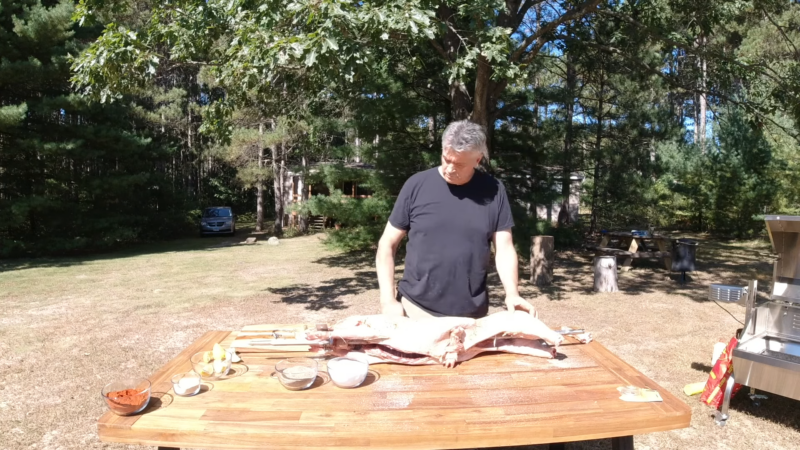
If you have a leg brace, place it on the skewer directly behind the large prong at the back. Depending on the type of leg brace, you will either be able to force the back legs into place, and they will stay there unassisted, or need to tie the legs to the brace using butchers’ twine or stainless-steel wire.
If you don’t have a leg brace, tie the back legs to the exposed large prong (from step 8) so they are as close to horizontal as possible to the skewer. Do the same thing with the front legs and the exposed front prong.
Stuff the belly with a fill of your choice. The easiest and cheapest way is to use 2-4 pounds (1-2 kg) of brown onions and apples. You can just cut these in half – no need to remove the skin from either. If you want to keep the apples from turning brown, consider tossing them in a mixture of lemon juice and water before stuffing, as the acidity helps preserve their color.
Place as many garlic cloves or any other herbs of your choosing. The belly can be fully filled. The apples and onions are high in moisture and will break down and moisten the meat from the inside out while it cooks.
Use a thin stainless steel wire, or butchers’ twine with a needle, and fully stitch the belly. Each stitch should be no more than 1 inch (2.5 cm) apart.
Place the pig, now attached to the skewer and fully prepared, on the spit and secure it to the motor. Start the motor so the spit starts rotating. If you have a variable-speed motor, 5 RPM is a good speed to use.
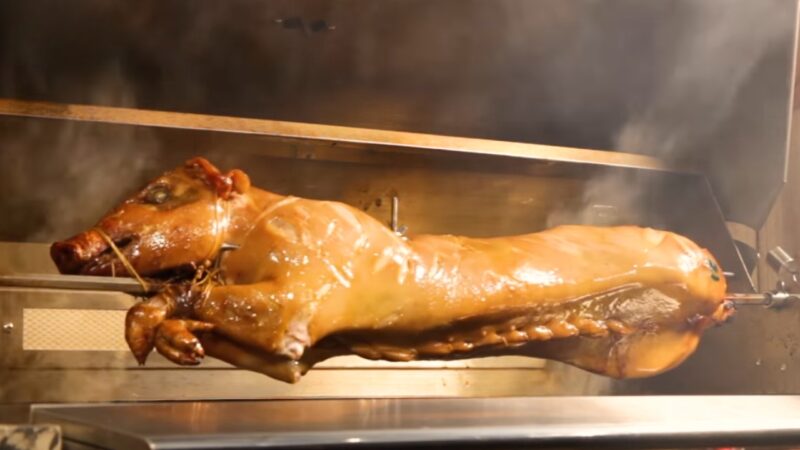
Whether you are using charcoal, wood, or gas, a good way to test if the heat output is enough is using the 6-8 second rule. If opting for a gas grill, make certain that the propane line is securely connected and functioning optimally to maintain the desired flame intensity.
If you can hold your hand at the bottom of the pig for 6-8 seconds before having to move it, you are at a good height. At this height, a 40-pound (20 kg) pig will take 7-8 hours to cook.
If you can hold your hand longer, you need to lower the height of the skewer. If your spit isn’t adjustable, you will need to increase the gas flame or add more charcoal or wood. If you can’t hold your hand for 6-8 seconds, you need to either raise the spit height or decrease the gas flame or remove some charcoal or wood.
The final step is to baste the pig every 30 minutes. An easy way to do this is by using 1 part lemon juice to 1 part olive oil. Every time you baste the pig also check the heat using the 6-8 second rule from step 15.
Once the pig is fully cooked, you can take it off the spit and rest it. If you don’t have anywhere to rest it, you can easily cut the pig while still on the spit. You will need heat-resistant gloves. If the skin hasn’t fully crackled, it should come off in large sections. You can then either grill it or put it into your oven or air fryer on high for 5 minutes.
How to Spit Roast a Whole Lamb
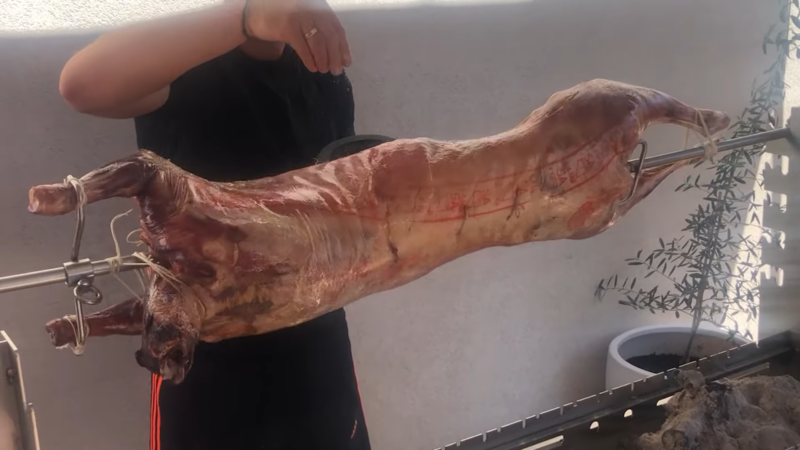
Cooking a whole lamb is like cooking a whole pig, with some important differences. A whole lamb typically requires a large spit due to its longer legs and body. Once you find the correct size spit for your lamb you can follow the whole pig steps adjusting for the following differences:
- You can use a lamb rub, or a similar salt and pepper rub as described in the whole pig steps. However, you may want to add cummin and ground rosemary. Otherwise, use the same amount of olive oil and cover the inside and outside of the lamb. You will also not need to score the animal.
- Securing the lamb to the skewer is the same as a pig except the lamb will have the head removed and the front prong is just pushed straight into the front shoulders. With whole lambs, you tend to use an additional leg brace at the front but if you don’t have that just leave some of the front prong exposed. Tie the legs to the leg braces or exposed prongs in the same manner as a whole pig.
- If you have an extra spine brace, use it to pull the neck down until it is horizontal to the skewer. If you don’t have an additional spine brace, just tie the neck down to the exposed front prong using butcher twine or stainless-steel wire.
- With a whole lamb, you don’t need to fully fill the belly with stuffing. Typically, for a 40-pound (20 kg) lamb, 2 pounds (1 kg) each of onions and lemons, halved, will be sufficient. Also, add 2-4 whole sprigs of fresh rosemary. Stitch the belly up in the same way as you would a pig.
- When cooking the lamb, you have two options. You can cook the lamb in 4-5 hours by using the 4-second rule. This means you should only be able to hold your hand under the bottom of the rotating lamb for 4 seconds before having to move it away. If you can hold it longer, lower the skewer or increase the heat. If you can’t hold it for 4 seconds, raise the skewer or decrease the heat. The second method is cooking the same lamb in 8-9 hours, by using the same 6-8 second rule as outlined in the whole pig section.
Using these adjustments to the whole pig method, you will produce a perfectly cooked lamb that will leave a long-lasting impression.
Conclusion
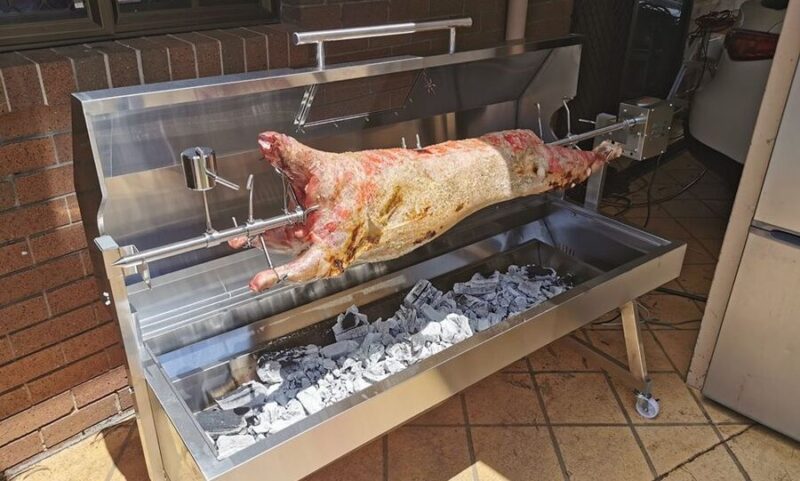
These are just two ideas that you can implement to transform your normal BBQ gatherings into something special, that friends and families will appreciate and remember forever. By following these above steps you will produce perfect whole animals every time.
You can find an in-depth and expanded guide of spit-roasting a whole pig. For a delightful crunchy addition to your barbecue experience, consider complementing the savory feast with the 8 best pork rinds available on the market.
Related Posts:
- 13 Gift Ideas For Meat Lovers - Grill, Smoke, and Savor
- Savor the Season: Creative Baking Ideas to Sweeten…
- 10 Best Roaster Oven 2023 - Perfectly Cooked Meals…
- 10 Best Vertical Rotisserie 2023 - From Shawarma to Chicken
- Top 10 Best Vertical Pellet Smokers Online 2023 -…
- Top 8 Best Summer Sausage 2023 - Elevating Your BBQ Game

